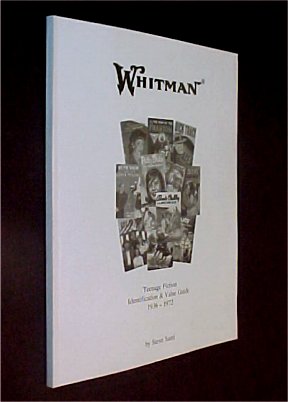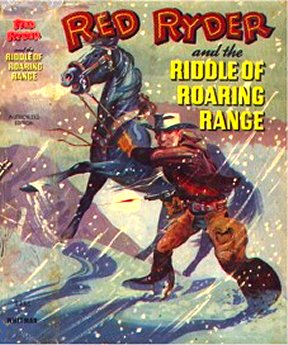

|
Part III: Price Guides and How to Use ThemPrice guides. Got any? My take on this is that, as a rule, booksellers don't attach much importance to them. Or buy them. I do - in fact, I amass them. Dozens are sitting quietly on my shelves an arm's reach away. I started buying them when I first got into this business, have relentlessly continued to grab them over the years, and still look for (and occasionally buy) titles I don't have. I consider them one of the best investments you can make in this business, but you know what? I almost never use them for the purpose they were written - pricing. As long as a book has enough value to justify the time I take to get it sold, I'm not particularly interested in what an author thinks it's worth. Let's face it, in this volatile era we sell in most price guides obsolesce the moment they hit the store shelves. Assuming that quoted prices are grounded in reality at the time of publication, give it a few months, and are they still? A few years out, and I think you'll agree that it's probably time for a complete revision. Book values are far more accurately arrived at by other means. Often, this can be accomplished online in a matter seconds and requires no investment whatsoever. But, if so, why bother with price guides? Here's the reason: unlike prices, niches don't change much. Sure, some come and go, heat up overnight, and disappear the next morning, but the truth is that most books that collect well today also collected well 5 or 10 or more years ago. If we can get our hands on this kind of information - what's collectible and what's not - we can convert it into profit-producing flashpoints. This is where price guides can deliver because they show us the all-important relative values, how one title stands in relationship to others in a defined grouping or genre. Unfortunately, these guides are rarely user friendly for booksellers because they aren't written for booksellers. They're written for collectors, usually by a collector who may or may not be a seller. As much as you might want them to, price guides don't dish out flashpoints as flashpoints. The good news is that it doesn't take long to get at the vital stuff, make a pile of goodies, and sort it into something useful. This article will show you how. The example I'm going to use for demonstration purposes is Steve Santi's Whitman Teenage Fiction Identification & Value Guide 1936-1972.

This is my most recent purchase; it's still sitting on my desk; and it's a manageable size. By the way, this particular guide is uncommon. I had to contact Steve personally to get it because there weren't any copies available online. See what lengths I'll go to? (He still has a few left if you're interested and has since posted them for purchase on his website.) You might recognize Steve as the author of the far more common, often revised and reprinted Collecting Little Golden Books, one of the better niche guides out there. Ok, the first thing to do with this thing is go plum picking, find the fruit, and to do this we'll first need to pick a price threshold. Suit yourself here, but if you typically buy books for about a buck, it makes sense to me to set the threshold at a current market value of at least $20 to $30. If the guide you're working with is a relatively recent publication, you should be good to go. (Steve's is reasonably close.) If not, you might need to do some calibrating first. Research a few of the higher priced titles online and look for trends. If most of the prices have dropped or risen significantly since the guide was published, ratchet your threshold up or down accordingly. Assuming we're all at $20 then, go through the book page by page and mark the books that are valued at this amount and higher. Remember, we're looking at prices for first editions in collector grade condition - the kind that sell readily for top dollar - so if the guide quotes prices for differing condition, pick the highest. This usually means VG (Very Good) to F (Fine) with (if applicable) dust jackets. Here's my completed list: I. 2300 Series (Dust Jackets) (1936-1954)
2300 Blondie and Dagwood's Adventure in Magic 1944 II. 1500 Series - Cello (1955-1966)
III. 1500 Series - Matt Finish (1961-1975)
IV. 2100 Series - Classics (Dust Jackets) (1935-1952)
V. 2100 Series - Tom Swift (Dust Jackets)
There are 595 titles listed in this guide. Of those, 88 of them met my $20 or better criterion. What do we do with this information? First, there's absolutely no need to memorize the list. What is helpful, however, is to look for patterns and try to form intuitive groups from them. After examining the list, this is how I broke things down:
Every title on my list fits into one of these categories. Some of them fit into 2, 3 or more. It's immediately apparent that "Westerns" comprise the biggest percentage by far. It's also interesting to note that many Westerns in Steve's guide just missed getting on this list (e.g., at $16 to $18), and very few Whitman Westerns have values under $10. For those of you who have looked at Gold Edition #6 (Profiting from the Fabulous 50's, Part I: 50's TV) or otherwise know your stuff, it should come as no surprise that Westerns attract great collector interest. "Science Fiction & Adventure" is no surprise either, nor are "Movie Stars" and "TV Tie-Ins" - if you pick your spots. The other 2 categories seem less promising. Whitman published many, many children's classics, and the fact that only 3 of these titles have significant value doesn't support this category for status as a flashpoint, though it's important, I think, to make a mental note of the 3 titles that did make the cut. "Alice in Wonderland," for example, is a perennial flashpoint. Also, "Comic Strip Characters" doesn't strike me as an especially hot category either. It just so happens that Dick Tracy and Blondie & Dagwood are collectible entities in their own right. So, let's toss the last 2 categories and distill this into something useful, something that will fit on a single page in a small notebook. Looking back at the list, there's one other pattern worth paying attention to: series. There are 3 exceptionally strong ones here - Tom Swift, Red Ryder and Tarzan - so strong that any title in any one of these series should be an automatic buy at a sale.

If you carry a notebook with you to sales, this is how I'd put together the page: WHITMAN TEENAGE FICTION GENRE FLASHPOINTS
TOPIC FLASHPOINTS
There it is. 9 whopping flashpoints. The results might not seem like much at first, especially since I coughed up over $20 for this guide and spent almost an hour mining it, but the kicker is, if you memorize this short list, you'll be armed with every ounce of information you'll need to grab 99% of Whitman Teenage Fiction books worth grabbing; you'll come home with very little junk; and the first time you come across a winner, you'll pay for the expense of the guide, your time spent mining it, and probably have something left over. The same process can (and should) be applied to any price guide. Some guides are much larger and require a more substantial investment of time, but every one of them is a gold mine of flashpoints.
< to previous article
Questions or comments?
| Forum
| Store
| Publications
| BookLinks
| BookSearch
| BookTopics
| Archives
| Advertise
| AboutUs
| ContactUs
| Search Site
| Site Map
| Google Site Map
Store - Specials
| BookHunt
| BookShelf
| Gold Edition & BookThink's Quarterly Market Report
| DomainsForSale
| BookThinker newsletter - free
Copyright 2003-2011 by BookThink LLC
|

|